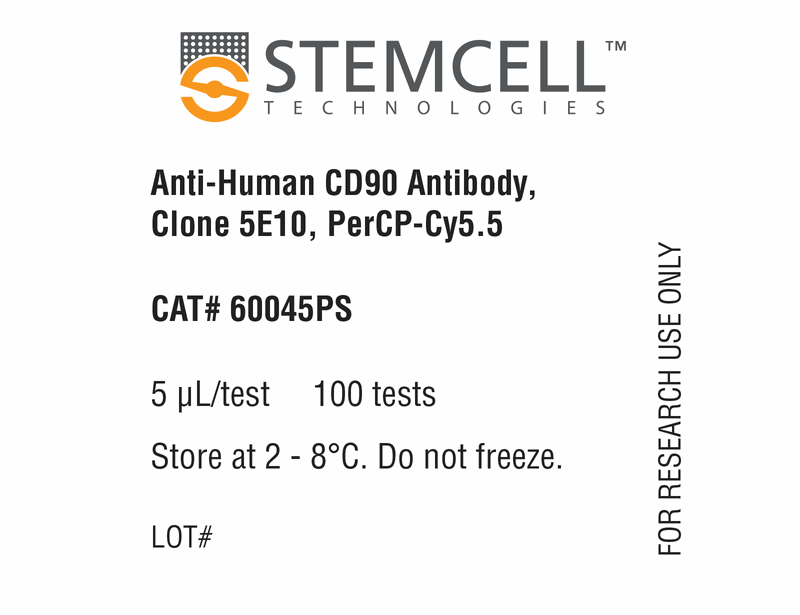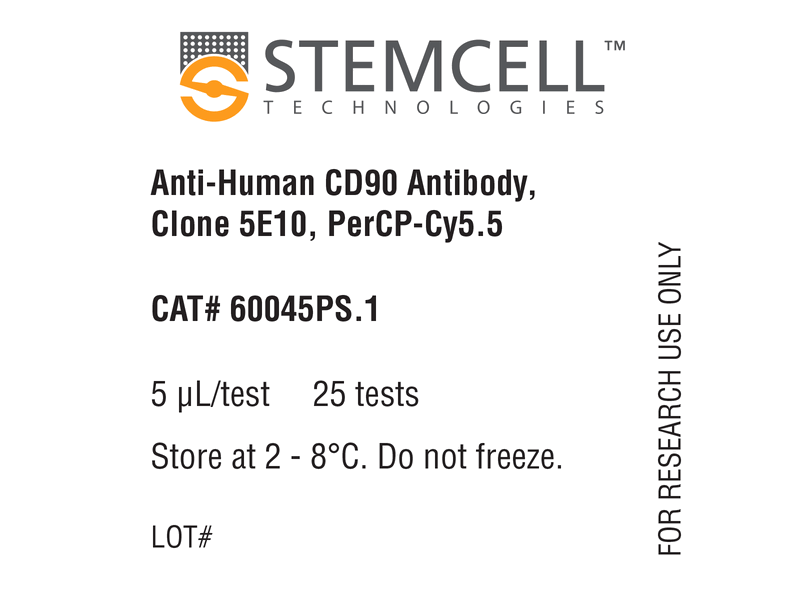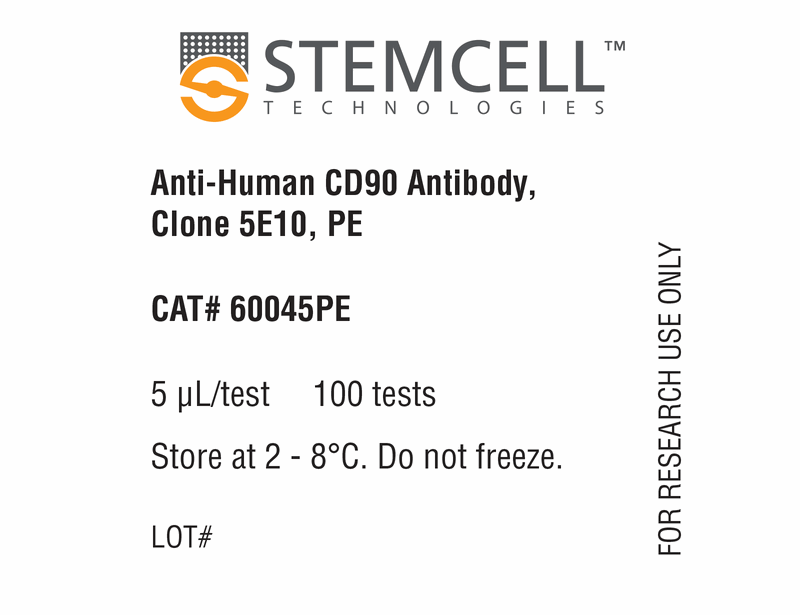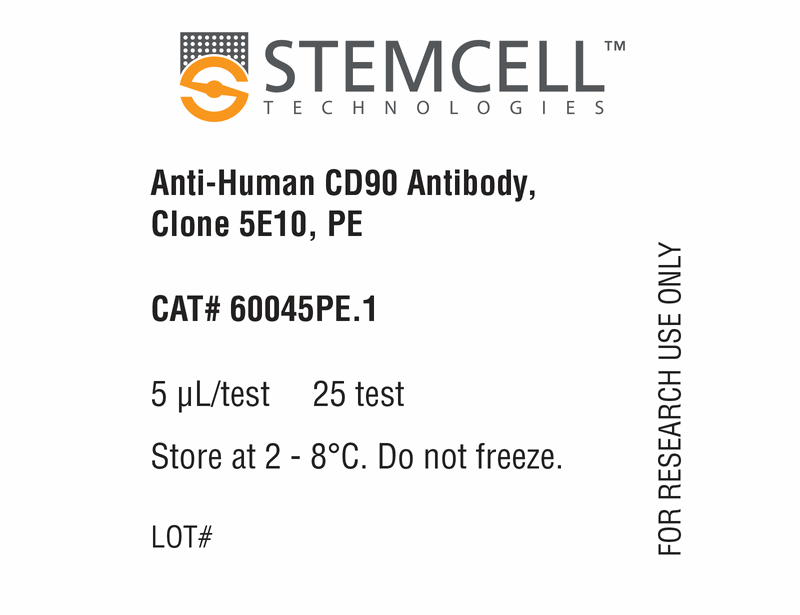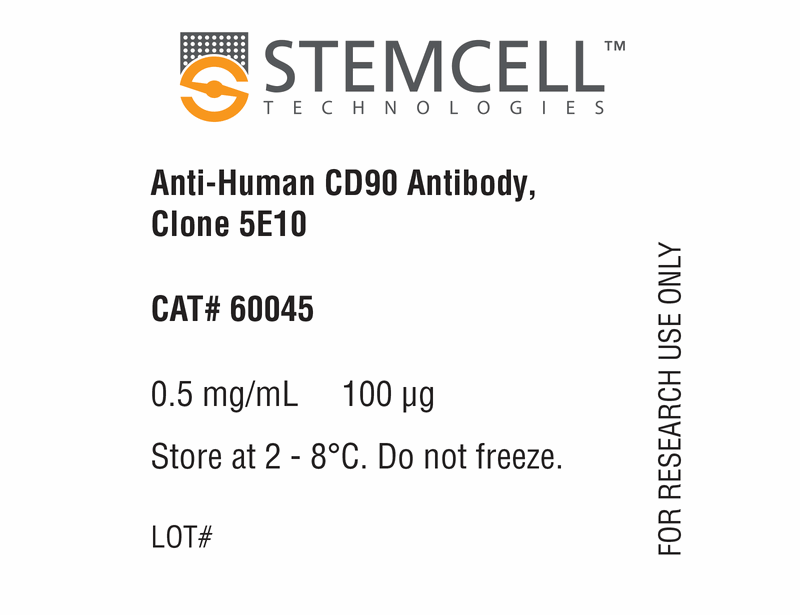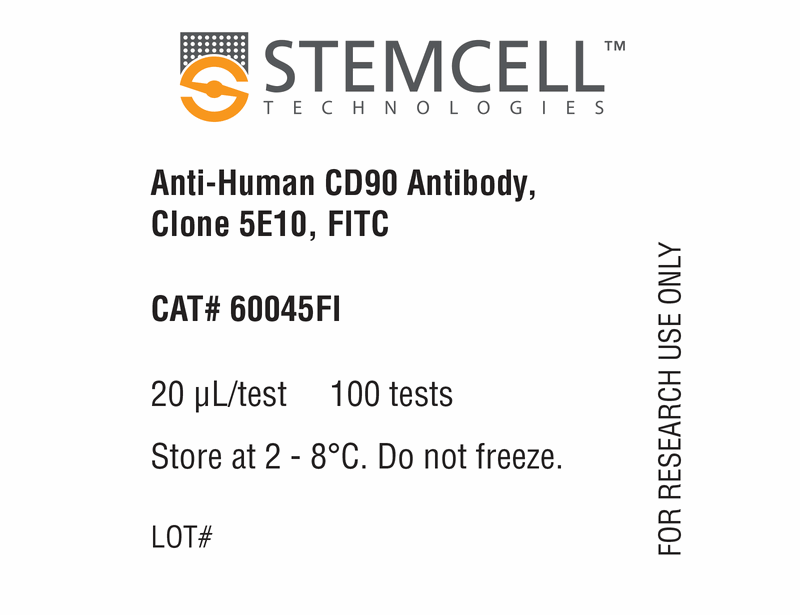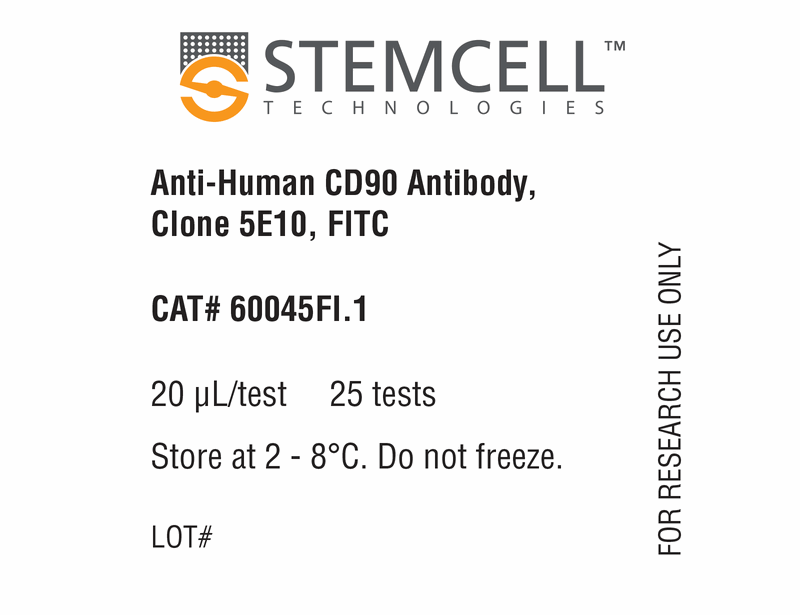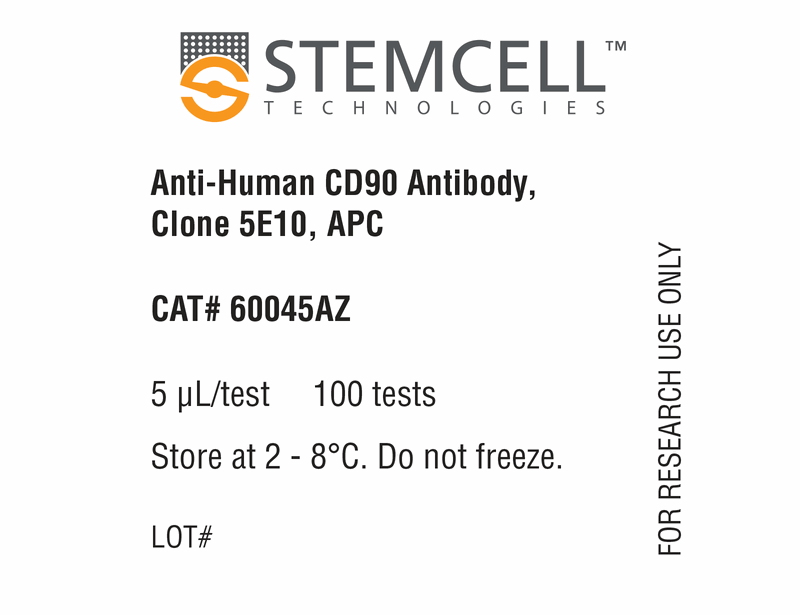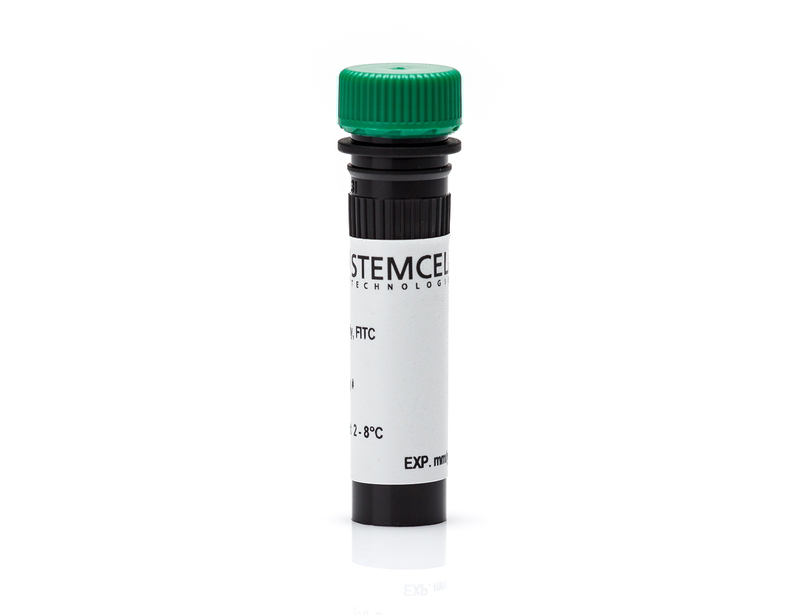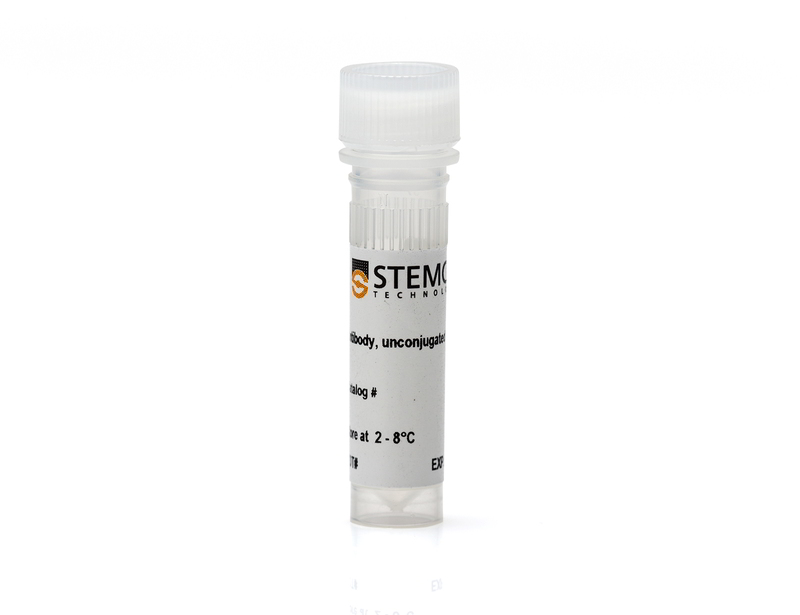概要
This antibody clone has been verified for labeling human mesenchymal cells grown in MesenCult™ Proliferation Kit (Human; Catalog #05411) and MesenCult™-XF Medium (Catalog #05420).
技术资料
数据及文献
Data

Figure 1. Data for Unconjugated
Flow cytometry analysis of human erythroleukemia (HEL) cells labeled with Anti-Human CD90 Antibody, Clone 5E10, followed by Goat Anti-Mouse IgG (H+L) Antibody, Polyclonal, FITC (Catalog #60138FI) (filled histogram), or a mouse IgG1, kappa isotype control antibody, followed by Goat Anti-Mouse IgG (H+L) Antibody, Polyclonal, FITC (solid line histogram).
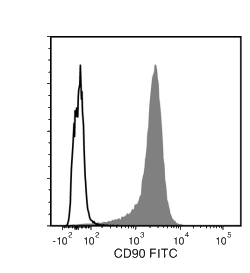
Figure 2. Data for FITC-Conjugated
Flow cytometry analysis of human erythroleukemia (HEL) cells labeled with Anti-Human CD90 Antibody, Clone 5E10, FITC (filled histogram) or Mouse IgG1, kappa Isotype Control Antibody, Clone MOPC-21, FITC (Catalog #60070FI) (solid line histogram).
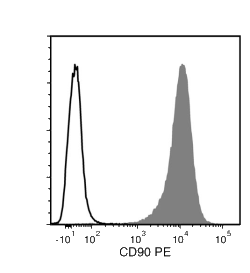
Figure 3. Data for PE-Conjugated
Flow cytometry analysis of human HEL cells labeled with Anti-Human CD90 Antibody, Clone 5E10, PE (filled histogram) or a mouse IgG1, kappa PE isotype control antibody (solid line histogram).

Figure 4. Data for APC-Conjugated
Flow cytometry analysis of human HEL cells labeled with Anti-Human CD90 Antibody, Clone 5E10, APC (filled histogram) or a mouse IgG1, kappa isotype control antibody, APC (solid line histogram).
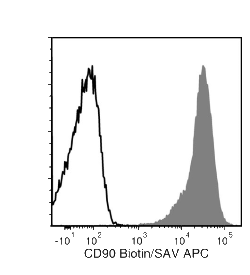
Figure 5. Data for Biotin-Conjugated
Flow cytometry analysis of human HEL cells labeled with Anti-Human CD90 Antibody, Clone 5E10, Biotin followed by streptavidin (SAV) APC (filled histogram), or a biotinylated mouse IgG1, kappa isotype control antibody followed by SAV APC (solid line histogram).
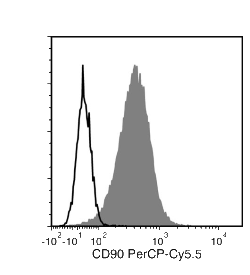
Figure 6. Data for PerCP-Cy55-Conjugated
Flow cytometry analysis of human erythroleukemina (HEL) cells labeled with Anti-Human CD90 Antibody, Clone 5E10, PerCP-Cy5.5 (filled histogram) or Mouse IgG1, kappa Isotype Control Antibody, Clone MOPC-21, PerCP-Cy5.5 (Catalog # 60070PS) (solid line histogram).

 网站首页
网站首页
